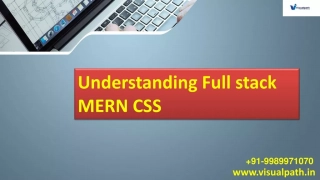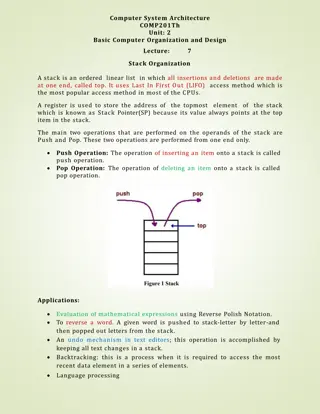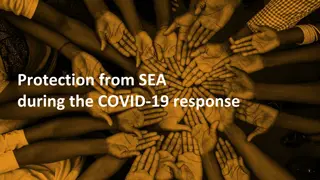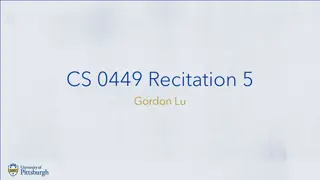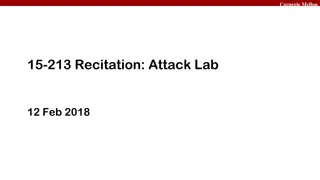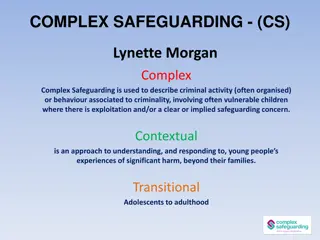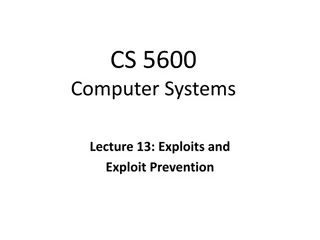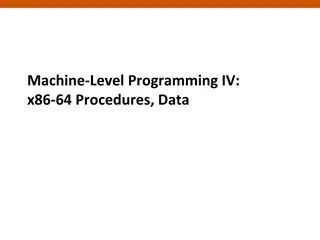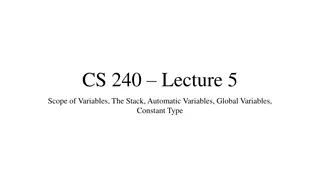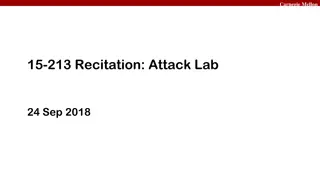Understanding Stack Protection and Exploitation Techniques
Delve into the world of stack protection and exploitation, covering topics like exploiting arbitrary write, issues with stack canaries, and shadow stack usage. Explore defense mechanisms like Stack Cookie and learn about the power of exploiting vulnerabilities to write arbitrary memory. Discover methods to change EIP value and understand the significance of Global Offset Table in dynamic function loading.
Download Presentation

Please find below an Image/Link to download the presentation.
The content on the website is provided AS IS for your information and personal use only. It may not be sold, licensed, or shared on other websites without obtaining consent from the author. Download presentation by click this link. If you encounter any issues during the download, it is possible that the publisher has removed the file from their server.
E N D
Presentation Transcript
Stack protection #2 Insu Yun
Objectives Understand how to exploit arbitrary write Understand other issues in stack canary Understand shadow stack
An Economic Defense: Stack Cookie A defense specific to sequential sequential stack overflow RETURN ADDR On a function call cookie = some_random_value SAVED %ebp COOKIE BUFFER Before the function returns if(cookie != some_random_value) printf( Your stack is smashed\n ); BUFFER BUFFER
Exploiting arbitrary write How can you exploit a vulnerability that allows you to write arbitrary memory with arbitrary content? i.e., arbitrary write One of the most powerful exploit primitives that we can have One way would be writing a return address as usual Your exploit is not reliable (i.e., hard to reproduce) A return address is not stable; it depends on your file name, environment variables, arguments,
Example How can we change eip = 0x41414141? int main() { intptr_t *ptr, value; read(0, &ptr, sizeof(ptr)); read(0, &value, sizeof(value)); *ptr = value; puts( Hello World ); }
1. GOT (Global Offset Table) Procedure Linkage Table (PLT) Stubs used to load dynamically linked functions
1. GOT (Global Offset Table) PLT stub calls a function in its GOT entry
1. GOT (Global Offset Table) struct link_map*: A data structure for shared objects _dl_runtime_resolve(link_map*, offset): Lazily loads a function address based on offset
1. GOT (Global Offset Table) __dl_runtime_resolve 1. According to offset, get a function name in an ELF binary (e.g., puts) 2. Based on the function name, get its address 3. Update GOT with the address and call the function This mechanism also can be used in attack: return_to_dl attack
1. GOT (Global Offset Table) No more lookup again!
1. GOT (Global Offset Table) frompwnimport * p = gdb.debug('./aaw ) # puts@got p.write(p32(0x804a014)) p.write("AAAA") p.interactive()
2. .dtors? If you check online materials, you might see .dtors .dtors is a list of functions that are called after exit() Overwriting .dtors entry makes you to. control your program counter It had been extensively used in exploiting arbitrary write, but it is no longer available .dtors is replaced with .fini_array .fini_array is read-only Remember: no .dtors anymore!
3. C library hooks e.g., __malloc_hook, __free_hook: Called before and after malloc() and free() __malloc_hook(size) __free_hook(void*) intptr_t *ptr, value; read(0, &ptr, sizeof(ptr)); read(0, &value, sizeof(value)); *ptr = value; int main() { puts( Hello World ); } Unfortunately, no malloc or free ?
3. C library hooks Set breakpoint before calling puts & Run Set breakpoint on malloc() puts() uses malloc! (for allocating buffer)
3. C library hooks frompwnimport * p = gdb.debug('./aaw ) p.write(p32(0xf7f95788)) p.write("AAAA") p.interactive()
4. __atexit() handlers int atexit(void (*function)(void)); Registers the given function to be called at normal process termination, either via exit(3) or via return from the program's main() How is it implemented? __exit_funcs: a linked list of atexit handlers atexit handler (struct exit_function) contains a function pointer If we can corrupt it, then we can call this function after program terminates
4. __atexit() handlers PTR_MANGLE: Mitigation for __atexit() handlers Same mechanism has been applied for __malloc_hook() and __free_hook() in the recent libc (but not ours) Q: Why do we need rotation? Idea: Using a random secret, modify a pointer Without leaking the secret, the pointer cannot be changeable If you have a more powerful primitive (e.g., arbitrary read), you can exploit it
5. Function pointers Many programs contain function pointers If you can corrupt this, then it is sufficient to control your pc One of the example FILE* structure (e.g., fopen) It contains virtual function table for supporting polymorphism FILE* is more complex than you can imagine e.g., FSOP: File structure oriented programming Play with FILE Structure Yet Another Binary Exploitation Technique in HITB2018
An Economic Defense: Stack Cookie A defense specific to sequential sequential stack overflow RETURN ADDR On a function call cookie = some_random_value SAVED %ebp COOKIE BUFFER Before the function returns if(cookie != some_random_value) printf( Your stack is smashed\n ); BUFFER BUFFER
Notify your buffer overflow In Ubuntu 18.04 (My machine) In Ubuntu 16.04 (Our server) Why does this change happen??
Think carefully when you design a mitigation Q: Can this file name be corrupted? A: Yes it can. It is stored in stack! Q: If it can, what s the consequence? A: You can read a content of arbitrary memory (i.e., arbitrary read) So, with stack overflow, you can still get arbitrary read So, it is patched now! (CVE-2010-3192)
Alterative stack protection: Shadow stack + Not vulnerable to information disclosure + More secure with additional protection for shadow stack - Performance overhead - Backward compatibility Ref: The Performance Cost of Shadow Stacks and Stack Canaries, AsiaCCS15
Trying to adopt shadow stack Intel designed a new set of instructions with Control-flow Enforcement Technology (CET) CALL/RET will copy its return address into shadow stack If a return address does not match with its shadow, then exception! Microsoft adopted CET from Windows 10 (20H1) Linux CET patch (2020. 12. 09)




